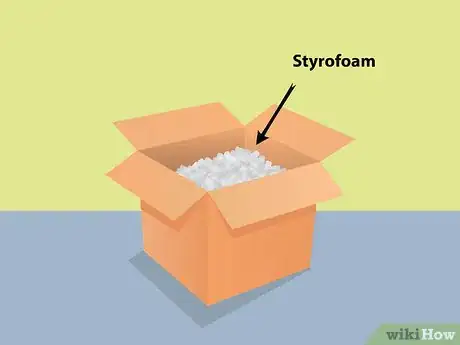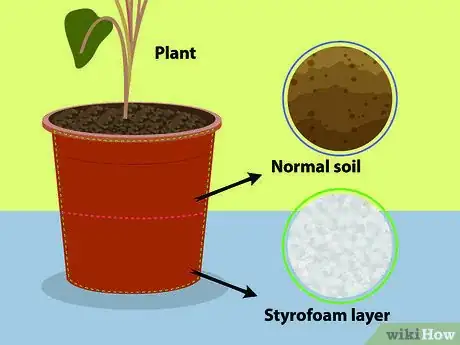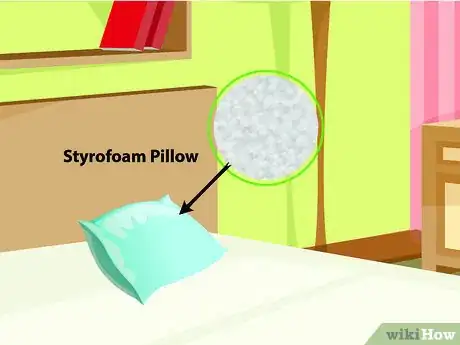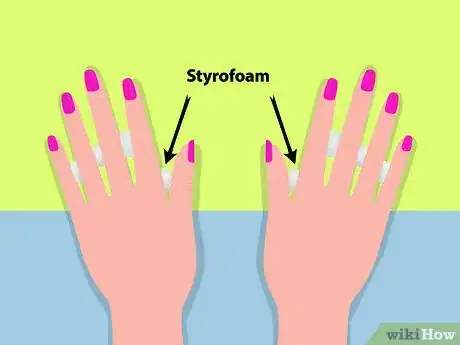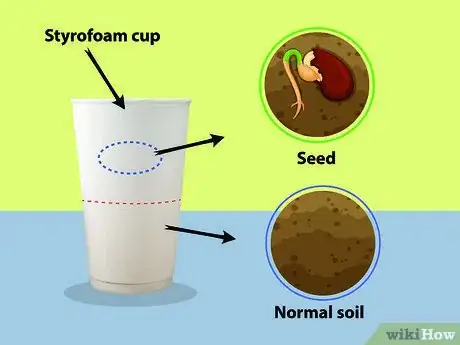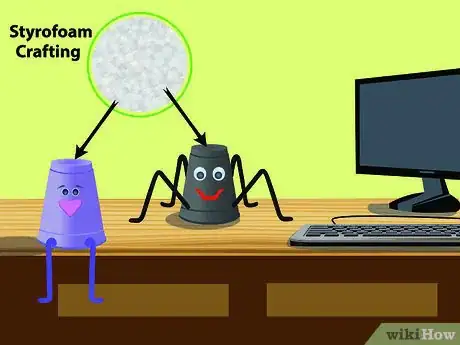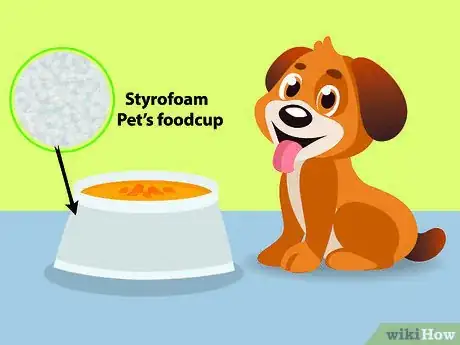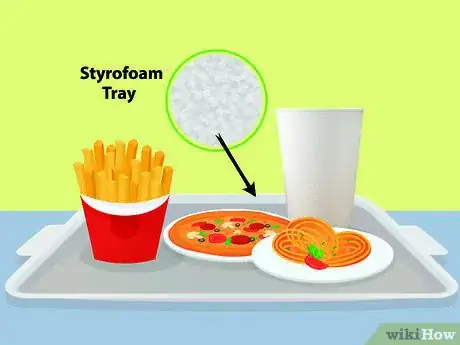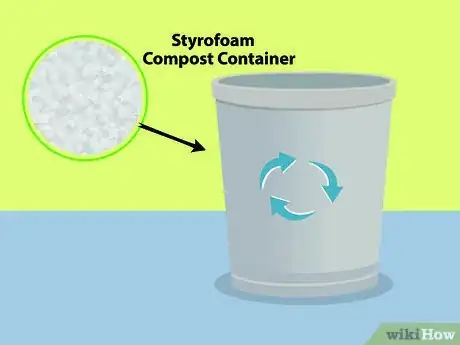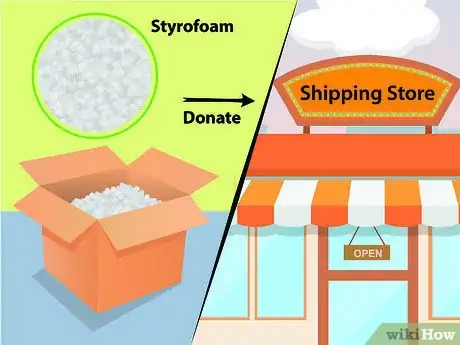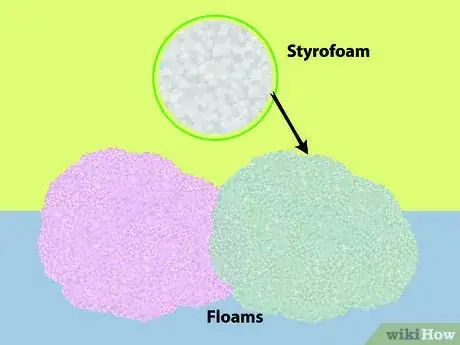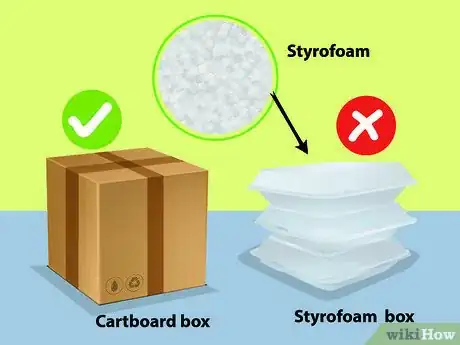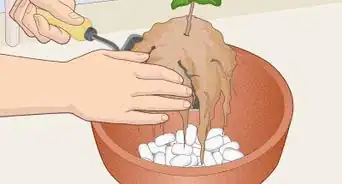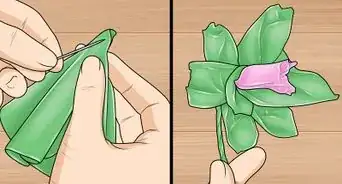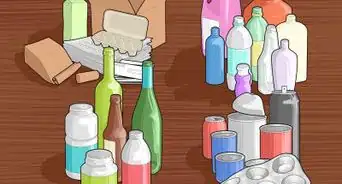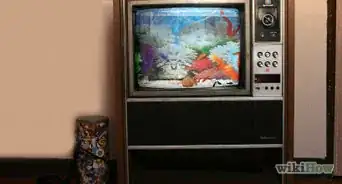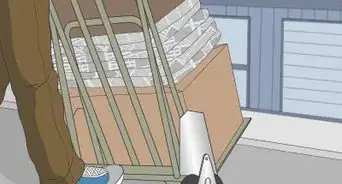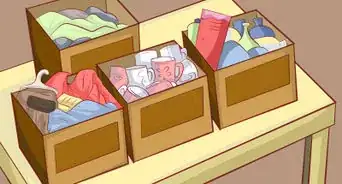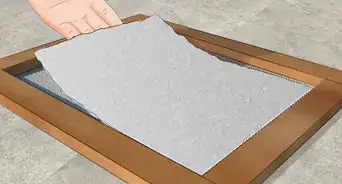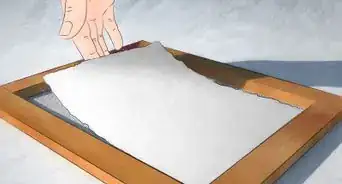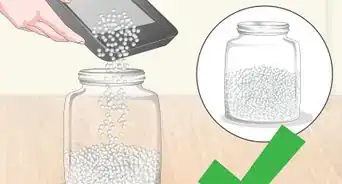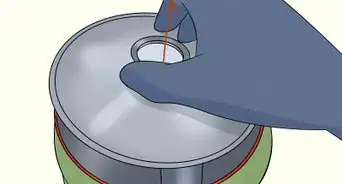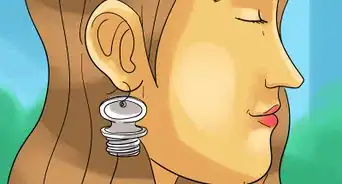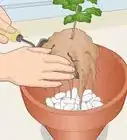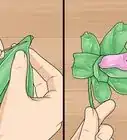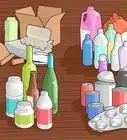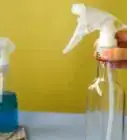This article was co-authored by wikiHow staff writer, Amber Crain. Amber Crain has been a member of wikiHow’s writing staff for the last six years. She graduated from the University of Houston where she majored in Classical Studies and minored in Painting. Before coming to wikiHow, she worked in a variety of industries including marketing, education, and music journalism. She's been a radio DJ for 10+ years and currently DJs a biweekly music program on the award-winning internet radio station DKFM. Her work at wikiHow supports her lifelong passion for learning and her belief that knowledge belongs to anyone who desires to seek it.
This article has been viewed 145,700 times.
Learn more...
Styrofoam is toxic to manufacture and constitutes, by volume, as much as thirty percent of landfills worldwide. Most areas (including a large part of the US) are unable to recycle styrofoam, so the most eco-friendly way to deal with it is to reuse and repurpose it! You can reuse packing peanuts in planters, turn Styrofoam cups into seedling starters, repurpose a Styrofoam cooler to be a compost bin, and so much more!
Steps
Reusing Styrofoam Packing Peanuts
-
1Use them in the next package you need to send out. When you receive Styrofoam packing peanuts in a shipment, simply reuse those in the next package you plan to send out. This way, you're not creating any more demand for Styrofoam products![1]
- If you don't have anything to pack up in the foreseeable future, take your Styrofoam peanuts to a nearby packaging store and donate them.
-
2Place some in the bottom of planters for drainage. Instead of using heavy rocks for drainage, use Styrofoam in your planters. Shake a small layer of the peanuts into the bottom of the pot, then fill the rest up with your usual potting soil. Doing this will also make your planters much lighter.[2]
- If you don't have peanuts, you can still break up larger pieces of Styrofoam and use them exactly the same way.[3]
- The Styrofoam will not harm the plants in any way.
Advertisement -
3Use them for stuffing in pillows and other craft projects. Styrofoam peanuts are soft enough to be used for stuffing things like pillows, plush toys, and beanbag chairs. This is a cheap and effective alternative to buying batting and craft stuffing.[4]
-
4Place them between your fingers and toes when polishing them. If you like to polish your nails and toes, packing peanuts are a great way to keep fingers and toes separated while the polish dries. Simply wedge one between each finger or toe, apply polish, and wait for them to dry -- worry-free![5]
Repurposing Styrofoam Cups,Trays, and Coolers
-
1Use cups as seedling starters. Poke a hole in the bottom for drainage, add the potting mix, and plant the seed in the soil. Set it in a sunny window and before you know it, a tiny seedling will appear.[6]
- Once they've grown a few inches tall, replant the seedlings in larger pots or directly into the ground.
- You can probably use the same cup for this purpose several more times.
-
2Organize your desk or crafting supplies with Styrofoam cups. You can use a cup as a simple pencil holder for your desk, or use it to hold small desk supplies like paperclips, thumbtacks, and stamps. They're also great for organizing craft supplies like buttons, pins, thimbles, and so on.[7]
-
3Use cups as scoops for pet food and litter. Toss a Styrofoam cup into your pet's bag of food or litter container. Whenever you need to refill their food bowls, use the cup as a scoop to make things faster and easier. When refilling a freshly cleaned litter box, use the cup to scoop it into their boxes.
-
4Use Styrofoam trays as snack trays. These work especially well for young children who tend to break things. These trays make it easier for them to transport beverages out to the pool, for example. Even better, the trays float in the water![8]
-
5Create a compost container with a Styrofoam cooler. Styrofoam ice chests make great compost bins for gardeners. Use it exactly the same way you'd use any compost bin. Now you're recycling Styrofoam, recycling kitchen scraps, and getting quality soil out of the deal. Not too shabby![9]
Using it in Other Ways
-
1Donate it to a local shipping store. Keep unneeded Styrofoam in a trash bag until it's full, then take it to your local Zip & Ship or similar shipping store for donation. They will usually accept free offers of your Styrofoam and re-use it for packing.
-
2Make floam with your kids. Floam is all the rage right now with kids, and Styrofoam is one of the main ingredients! It forms a squishy clay-like substance that can be customized in many different ways. Whip up a batch, then let your kids mold, twist, roll and press the floam to their heart's content![10]
-
3Avoid purchasing Styrofoam in the first place. Try to use other alternatives which are more biodegradable. For example, when you can buy eggs in either cardboard or Styrofoam, choose to buy the cardboard-packaged eggs.
Community Q&A
-
QuestionIs it possible to crumple up styrofoam and mold it into a new shape?
 Community AnswerIt will need to be dissolved with a solvent or heated to hold its shape.
Community AnswerIt will need to be dissolved with a solvent or heated to hold its shape. -
QuestionCan I reuse styrofoam to plant sempervivums?
 Community AnswerProbably. The article said styrofoam could be used in place of rocks in a planter for drainage. Plus, most potting soil has styrofoam.
Community AnswerProbably. The article said styrofoam could be used in place of rocks in a planter for drainage. Plus, most potting soil has styrofoam. -
QuestionWill anything leach out into my vegetables and herbs if styrofoam peanuts are added to the soil?
 GabrielCommunity AnswerStyrofoam breaks down with UV light and solvents gradually over time and usually takes very long for the chemicals to release into the soil. There is a chance BPA may be released, depending on the type of packaging foam you use. However, many companies who sell potting soil already add some along with perlite to improve water retention and aeration, and also for lighter containers and filler to use less soil.
GabrielCommunity AnswerStyrofoam breaks down with UV light and solvents gradually over time and usually takes very long for the chemicals to release into the soil. There is a chance BPA may be released, depending on the type of packaging foam you use. However, many companies who sell potting soil already add some along with perlite to improve water retention and aeration, and also for lighter containers and filler to use less soil.
References
- ↑ https://get-green-now.com/reuse-styrofoam/
- ↑ https://get-green-now.com/reuse-styrofoam/
- ↑ http://www.readersdigest.ca/home-garden/tips/5-things-do-styrofoam/
- ↑ https://get-green-now.com/reuse-styrofoam/
- ↑ http://www.readersdigest.ca/home-garden/tips/5-things-do-styrofoam/
- ↑ https://get-green-now.com/reuse-styrofoam/
- ↑ https://get-green-now.com/reuse-styrofoam/
- ↑ http://www.readersdigest.ca/home-garden/tips/5-things-do-styrofoam/
- ↑ https://get-green-now.com/reuse-styrofoam/
